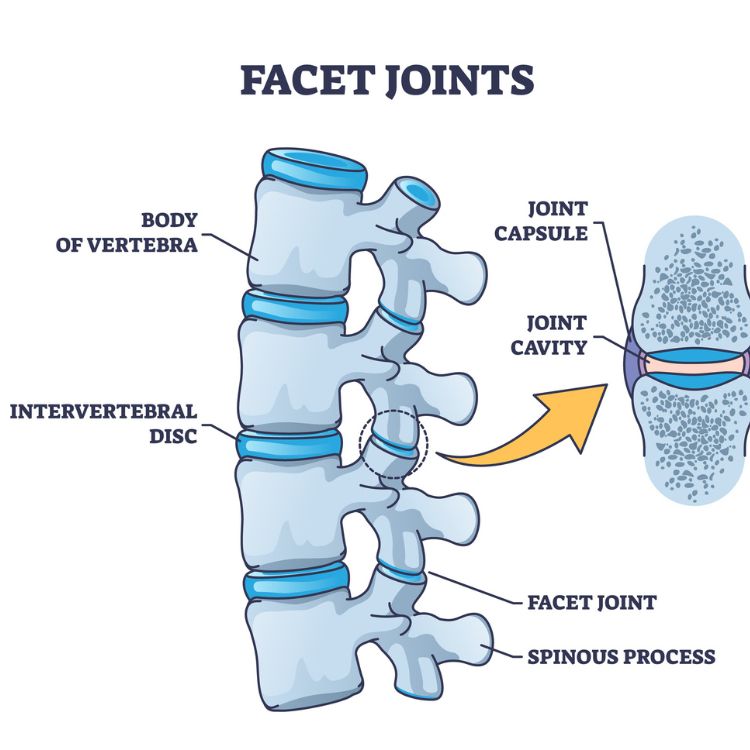What to Expect from a Facet Joint Injection
Before the Procedure
When you arrive for your appointment, you will have the chance to speak with a clinical staff member who will answer any questions you may have. You will also review and sign a consent form to confirm your understanding of the procedure.
During the Procedure
The injection is performed in a sterile medical setting, and you will be positioned comfortably on the treatment table. The targeted area will be cleaned and sterilized to minimize the risk of infection.
To ensure accuracy, your doctor will use a fluoroscope, a specialized X-ray machine, to guide the needle into the precise location of the affected facet joint. A local anesthetic will be applied to numb the area before the needle is inserted. Once the needle is properly positioned, your doctor will inject the medication, which typically includes:
- A local anesthetic to block pain signals
- An anti-inflammatory drug (corticosteroid) to reduce swelling and irritation
If you experience any discomfort during the injection, let your doctor know. Adjustments can often be made to improve your comfort. The entire procedure generally takes 15 to 30 minutes, after which the needle is removed, and the injection site is covered with a sterile bandage.
After the Procedure & Recovery
Following the injection, you will be monitored in a recovery area for a short period before being discharged. Since the anesthetic may cause temporary numbness or weakness, you will need a responsible adult to drive you home.
It is normal to experience mild soreness at the injection site for up to 24 hours. You can manage this with:
- Ice packs to reduce swelling
- Over-the-counter pain relievers if needed
- Rest to allow your body to adjust
If you have any concerns during your recovery, contact us for guidance.
How Effective Are Facet Joint Injections?
Facet joint injections can provide both immediate and long-term pain relief, though results vary from person to person. Their primary purpose is to help confirm whether your facet joints are the true source of your pain.
If you experience significant temporary relief, your doctor may recommend Radiofrequency Ablation (RFA), a longer-lasting treatment that targets the nerves responsible for transmitting pain. If the injection does not relieve your symptoms, other possible causes of your pain will be explored.
To maximize the benefits of this procedure, carefully track and record your pain levels in the days following your injection. This information will help your doctor determine the next best course of action for your treatment plan.


